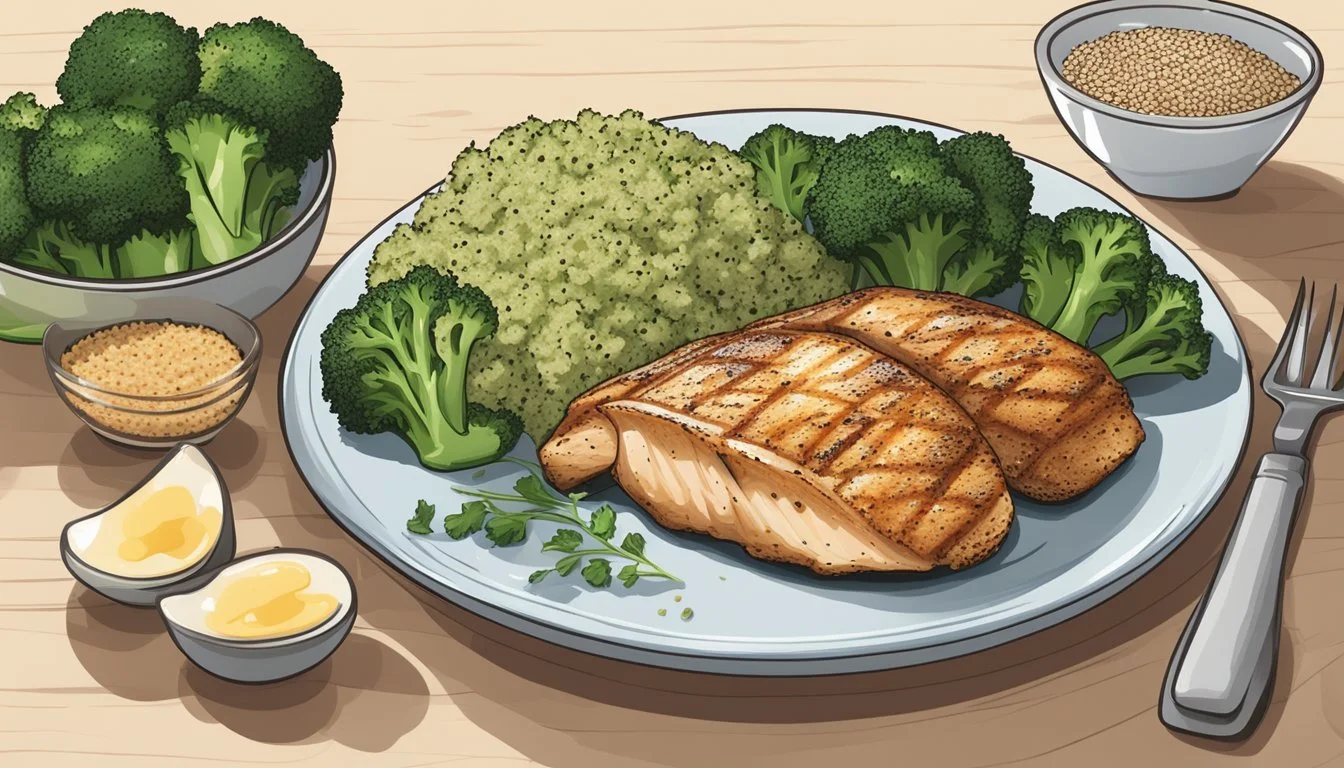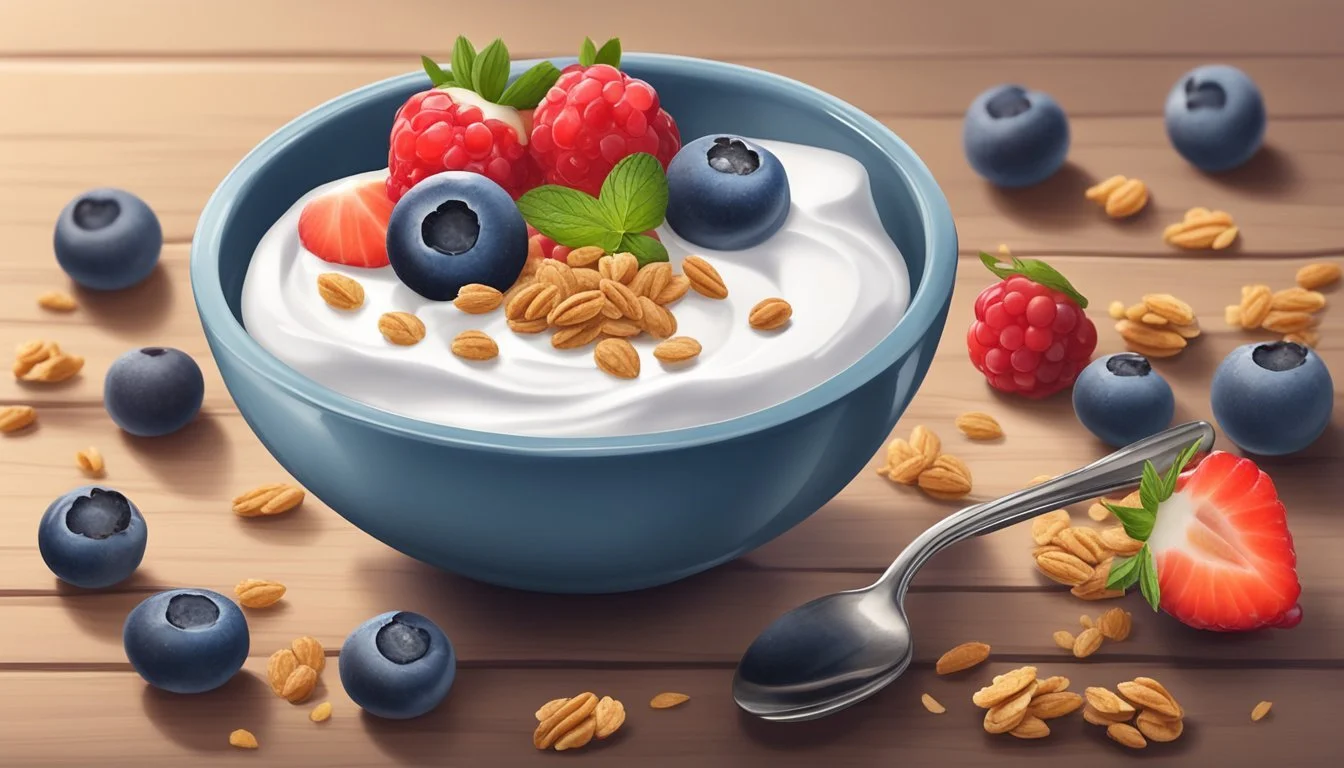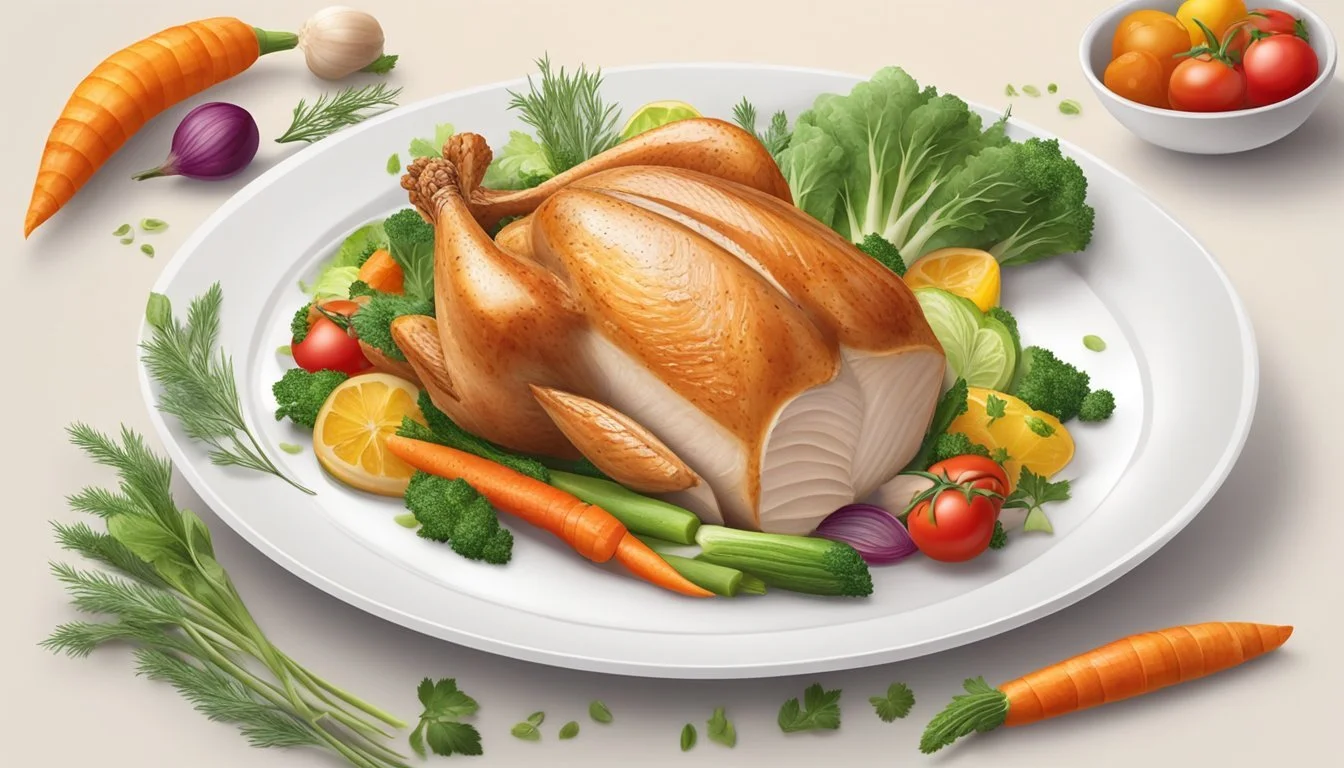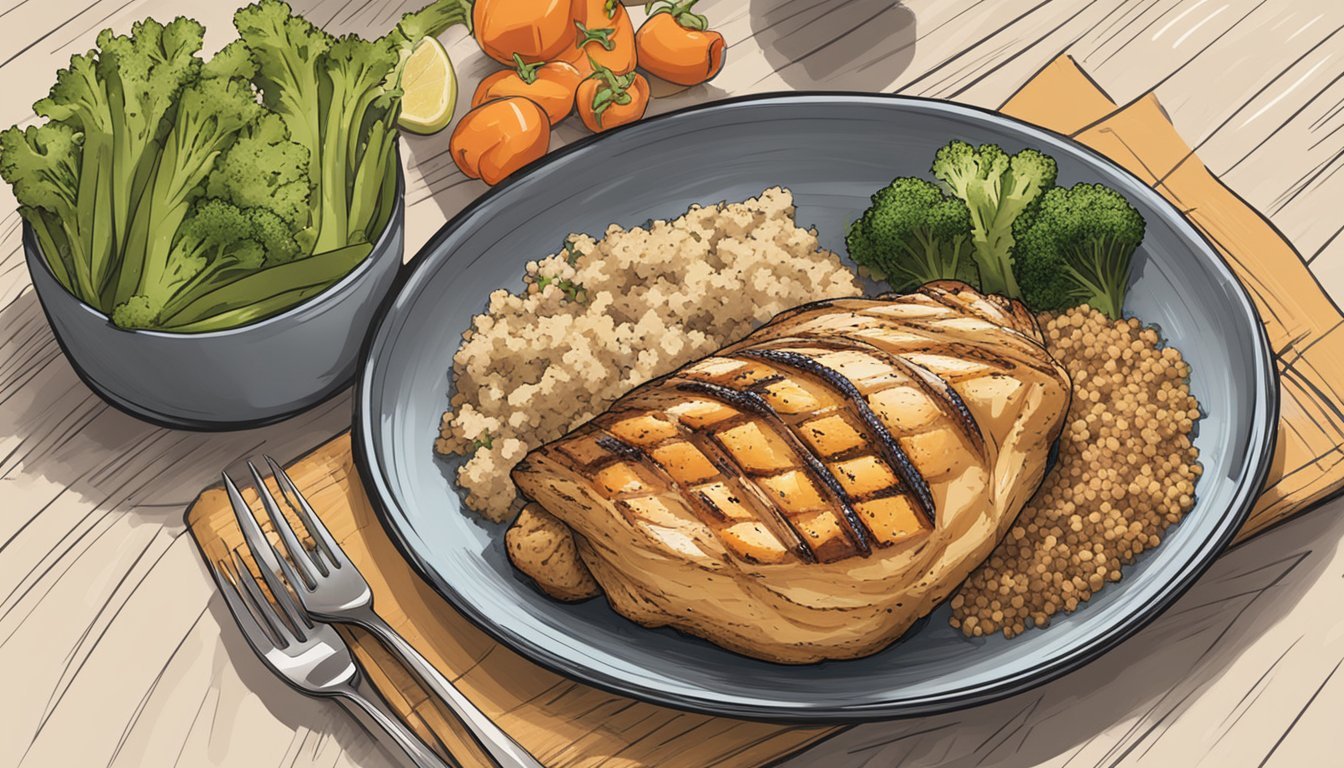25 High-Protein, Low-Fat Foods for a Balanced Diet
The Ultimate Guide for Healthy Eating
In today's health-conscious world, high-protein, low-fat foods have gained immense popularity among those looking to lead a balanced and nutritious lifestyle. These foods not only support muscle growth and repair but also aid in maintaining a healthy weight by providing essential nutrients without the excess calories from fat. Choosing the right foods that are both high in protein and low in fat can be a game-changer for overall health and wellness.
Incorporating these nutrient-rich options into daily meals can enhance dietary quality and contribute to various health benefits. Foods that offer a high protein content while keeping fat levels to a minimum are invaluable for anyone aiming to improve their diet, whether for weight management, athletic performance, or general well-being. This article will explore some of the best choices available, providing practical tips and suggestions for adding them to your diet.
1) Grilled Chicken Breast
Grilled chicken breast is a popular food choice for those seeking high protein and low fat meals. It is incredibly versatile and can be used in various dishes, including salads, sandwiches, bowls, and as a main dish paired with vegetables and grains.
This lean meat is often marinated with ingredients like olive oil, garlic, red wine vinegar, and dried herbs to enhance its flavor. When grilled, chicken breasts develop a deliciously charred exterior while remaining juicy inside.
A grilled chicken breast provides ample protein, supporting tissue growth and repair. This makes it an excellent option for those looking to maintain or build muscle mass. It is also low in fat, fitting well into a balanced diet.
Grilled chicken breast is an easy option for meal prepping ahead of time. It can be cooked in batches and stored for use throughout the week, making healthy eating more convenient.
2) Greek Yogurt
Greek yogurt is a popular choice for those seeking foods high in protein but low in fat. It is known for its rich texture and is available in various milkfat percentages, including fat-free options.
A serving of Greek yogurt can provide a substantial amount of protein, aiding in muscle repair and growth. For example, Oikos Triple Zero Vanilla offers 17 grams of protein per serving. This makes it a satisfying snack that helps keep one feeling full longer.
Different brands offer slight variations in protein content. Protein's Vanilla Greek Yogurt, for example, boasts 25 grams of protein per cup. The product remains low in sugar, making it a nutritious option for those mindful of their sugar intake.
Consumers can choose from yogurt with varying levels of fat content, from 0% to higher percentages for a creamier texture. The versatility of Greek yogurt allows it to be used in smoothies, as a topping for granola, or even as a base for savory dishes.
Greek yogurt is also a source of probiotics, which can support gut health. Selecting plain or lightly sweetened varieties allows for customizable flavors while keeping added sugars in check.
3) Tofu
Tofu is a popular plant-based protein source with a remarkable protein-to-fat ratio. Often included in various diets, it offers approximately 8.5 grams of protein and just 0.8 grams of fat per 100 grams. Its low saturated fat content makes it an excellent choice for those looking to increase their protein intake without adding extra fat.
It is also versatile in cuisine, absorbing the flavors of the ingredients it is cooked with. This adaptability means it can be used in salads, stir-fries, soups, scrambles, and even desserts. Whether it is marinated, baked, or grilled, tofu can fit into a wide variety of recipes.
Tofu is made from soybean curds, making it a good source of calcium and iron, especially for those following vegan or vegetarian diets. Some types of tofu, such as nigari-set, may have different nutritional profiles, but they consistently offer both protein and essential nutrients.
Additionally, tofu contains probiotics due to its fermentation process, which can benefit gut health. Because it is fermented, it also tends to be easier to digest compared to other soy-based foods. This makes it a nutritious add-on to any balanced diet focused on high protein and low fat.
4) Egg Whites
Egg whites are an excellent source of protein while being low in calories and fat. This makes them a popular choice for those looking to increase protein intake without adding extra fat to their diet.
Each egg white from a large egg contains approximately 4 grams of protein and almost no fat or carbohydrates. The calorie content is minimal, with about 15 calories per egg white.
Due to their high protein and low-calorie profile, egg whites can be beneficial for individuals aiming to lose weight or build muscle. They can easily be incorporated into various dishes, such as omelets or breakfast cups.
Nutritionally, egg whites also contain essential minerals like selenium and calcium, although in lesser amounts compared to whole eggs. Despite the lower nutrient density compared to whole eggs, their high protein content remains a key advantage.
5) Tuna
Tuna is a protein-rich food valued for its low-fat content. A 3-ounce serving of cooked yellowfin tuna provides approximately 25 grams of protein. This makes it an excellent option for those seeking to increase their protein intake without consuming excessive fats.
Different varieties of tuna offer distinct nutritional benefits. White albacore tuna, for instance, is higher in calories and omega-3 fats than skipjack tuna. Both types are nutritious and feature essential vitamins and minerals, including Vitamin A, B complex vitamins, and Vitamin D.
Canned tuna is also a convenient option, offering around 32 grams of protein per can. This makes it an accessible protein source for many people. Additionally, the omega-3 fatty acids present in tuna contribute to heart health.
Bigeye tuna is notable for its high concentrations of various vitamins and minerals. For example, it contains significant amounts of selenium and Vitamin B12. Its low calorie and fat content further enhance its appeal as a protein source.
Tuna is versatile and can be incorporated into many dishes, from salads to sandwiches and grilled entrees. This adaptability, combined with its nutritional profile, makes tuna a staple in protein-conscious diets.
6) Turkey Breast
Turkey breast is a dependable choice for those seeking high-protein, low-fat foods. It provides an excellent source of lean protein, making it a favorite among athletes and fitness enthusiasts.
In just a 3-ounce serving, turkey breast offers around 25 grams of protein. The fat content remains impressively low, typically under 2 grams per serving.
This lean meat is versatile in the kitchen. It can be grilled, baked, or used in salads and sandwiches. The mild flavor also pairs well with various seasonings and marinades.
Additionally, turkey breast is rich in essential nutrients such as vitamin B6, niacin, and selenium. These nutrients support metabolism, energy production, and overall health.
When selecting turkey breast, opt for skinless versions to maintain the low-fat benefits. Avoid processed turkey products, which may contain added sodium and preservatives.
Proper cooking methods can help retain its nutritional benefits. Marinating the turkey breast in lemon juice, olive oil, and herbs can enhance flavor without adding unnecessary calories.
7) Cottage Cheese
Cottage cheese is both high in protein and low in fat, making it a favorite among those looking to maintain or build muscle while keeping their calorie intake in check.
A typical 100-gram serving of 2% cottage cheese offers about 84 calories, with 52% of those calories coming from protein. The protein content is substantial, which supports muscle repair and growth.
It's also low in fat, with some variants offering less than 2 grams of fat per serving. For those watching their fat intake, low-fat or non-fat options are widely available.
Beyond protein, cottage cheese is rich in essential nutrients such as selenium and phosphorus, which contribute to overall health. Its versatility allows it to be incorporated into various dishes, from smoothies to savory snacks.
For those who struggle with its texture, blended recipes, like smoothies with roasted strawberries, can offer a smoother alternative. Whether eaten on its own or mixed into recipes, cottage cheese proves to be a practical and nutritious choice for a high-protein, low-fat diet.
8) Lentils
Lentils are an excellent source of protein and low in fat. They come in various types, including green, brown, and red lentils. Each type offers a significant amount of plant-based protein, making them a popular choice for vegetarians and vegans alike.
Lentils contain about 18 grams of protein per cooked cup. This makes them comparable to some animal protein sources in terms of protein content. In addition to protein, lentils are high in fiber, which aids in digestion and promotes a healthy gut.
Lentils are also packed with essential minerals. They provide substantial amounts of potassium, zinc, copper, and manganese. These nutrients play crucial roles in various bodily functions, from maintaining bone health to supporting the immune system.
Lentils are versatile in cooking and can be added to a variety of dishes. They work well in soups, stews, salads, and even burgers. This adaptability makes lentils an easy addition to many meals, allowing for both variety and nutritional benefits.
The low-fat content of lentils makes them suitable for those looking to manage their fat intake without compromising on protein. They are also naturally gluten-free, making them ideal for those with gluten sensitivities or celiac disease.
9) Tempeh
Tempeh, a traditional Indonesian soy product, is a versatile food item known for its high protein content and low fat levels. Made from fermented soybeans, tempeh offers a firm texture that works well in various dishes.
A 3-ounce serving of tempeh provides approximately 15-18 grams of protein and contains just 5-10 grams of fat. Most of this fat comes from beneficial mono and polyunsaturated sources.
Tempeh is also a rich source of vitamins and minerals. It contains essential nutrients such as manganese, copper, phosphorus, and B vitamins. Additionally, it provides a good amount of dietary fiber, which aids in digestion and promotes feelings of fullness.
This food is especially popular among vegetarians and vegans due to its complete protein profile. It contains all the essential amino acids that the body needs for muscle repair and growth.
Besides its protein content, tempeh is also low in carbohydrates and sodium. This makes it an excellent choice for those looking to manage their weight or reduce their salt intake. It can be marinated, grilled, or added to salads and stir-fries for a nutritious boost.
10) Tilapia
Tilapia stands out as a nutritious fish that is high in protein and low in fat. This makes it an excellent choice for those looking to increase their protein intake without adding significant fats to their diet.
A 4-ounce serving of tilapia provides approximately 23 grams of protein. Additionally, it contains only 2 grams of fat and less than 1 gram of saturated fat. This lean profile makes it suitable for various dietary needs.
Tilapia is also rich in vitamin B12. This vitamin is essential for DNA synthesis, the maintenance of the nervous system, and the production of red blood cells.
It is relatively low in calories and sodium. This makes tilapia a good option for those mindful of their calorie and salt intake.
Versatility is another advantage. Tilapia can be easily incorporated into various dishes, from fish tacos to hearty tomato broths. It cooks quickly, making it a convenient choice for busy lifestyles.
When selecting tilapia, it is important to consider how it is raised. Opting for responsibly farmed tilapia can help avoid potential concerns related to environmental impact and contamination.
Benefits of High Protein, Low Fat Foods
Foods that are high in protein yet low in fat offer several important health benefits, such as promoting muscle growth and repair, aiding in weight management, and improving heart health.
Muscle Growth and Repair
High protein, low fat foods are essential for muscle growth and repair. Proteins are made up of amino acids, which are the building blocks of muscles. During exercise, small tears occur in muscle fibers, and protein helps repair these tears, leading to muscle growth.
Lean meats, fish, and plant-based proteins like seitan provide substantial protein with minimal fat. For example, a serving of black beans offers around 15 grams of protein and only 1 gram of fat. This makes them a great choice for those looking to build and maintain muscle mass.
Weight Management
Incorporating high protein, low fat foods into a diet can be beneficial for weight management. Protein increases satiety, meaning it helps people feel full longer, which can reduce overall calorie intake. This is particularly helpful for those looking to lose or maintain weight.
Flounder, a lean fish, provides 19 grams of protein and only 1 gram of fat per serving. This not only aids in feeling full but also supports a healthy weight loss plan without compromising flavor. Moreover, these foods often come with lower calorie counts, making them ideal for calorie-restricted diets.
Heart Health
Consuming high protein, low fat foods can also support heart health. Diets high in saturated fats are linked to increased cholesterol levels and a higher risk of heart disease. By choosing low-fat protein sources, individuals can help reduce these risks.
Beans are an excellent option, offering high protein with virtually no saturated fats. They also contain fiber, which is beneficial for heart health. Similarly, lean fish like flounder provide heart-healthy fats such as omega-3 fatty acids, which are known to promote cardiovascular health by reducing inflammation and blood pressure.
Nutritional Guidelines
To maintain a diet high in protein and low in fat, understanding your daily intake needs and balancing macronutrients effectively is crucial. This section provides specific guidelines to help individuals meet their nutritional goals.
Recommended Daily Intake
The recommended daily protein intake varies based on factors such as age, sex, and activity level. For the general adult population, 1.2-2 grams of protein per kilogram of body weight is suggested. For instance, a 68 kg (150 lbs) individual should aim for approximately 82-136 grams of protein daily.
In terms of fat intake, it's advisable to keep fats to about 20-35% of daily caloric intake. Prioritize unsaturated fats from sources like nuts and avocados, while minimizing saturated and trans fats to support cardiovascular health.
Balancing Macronutrients
Achieving a balance of macronutrients involves distributing calories among protein, fats, and carbohydrates. For optimal health, carbohydrates should constitute 45-65% of your total calorie intake. Incorporate whole grains, vegetables, and fruits to ensure sufficient fiber intake.
Protein should make up 10-35% of daily calories. Lean meats, fish like tilapia and flounder, legumes, and dairy products are excellent sources. Fat intake should be managed carefully; include sources like fish, nuts, and seeds for beneficial fats.
Maintaining this balance helps in muscle repair, energy sustenance, and overall metabolic function. Adjust these proportions based on activity levels and dietary goals, whether it be muscle gain, weight loss, or maintaining general health.





